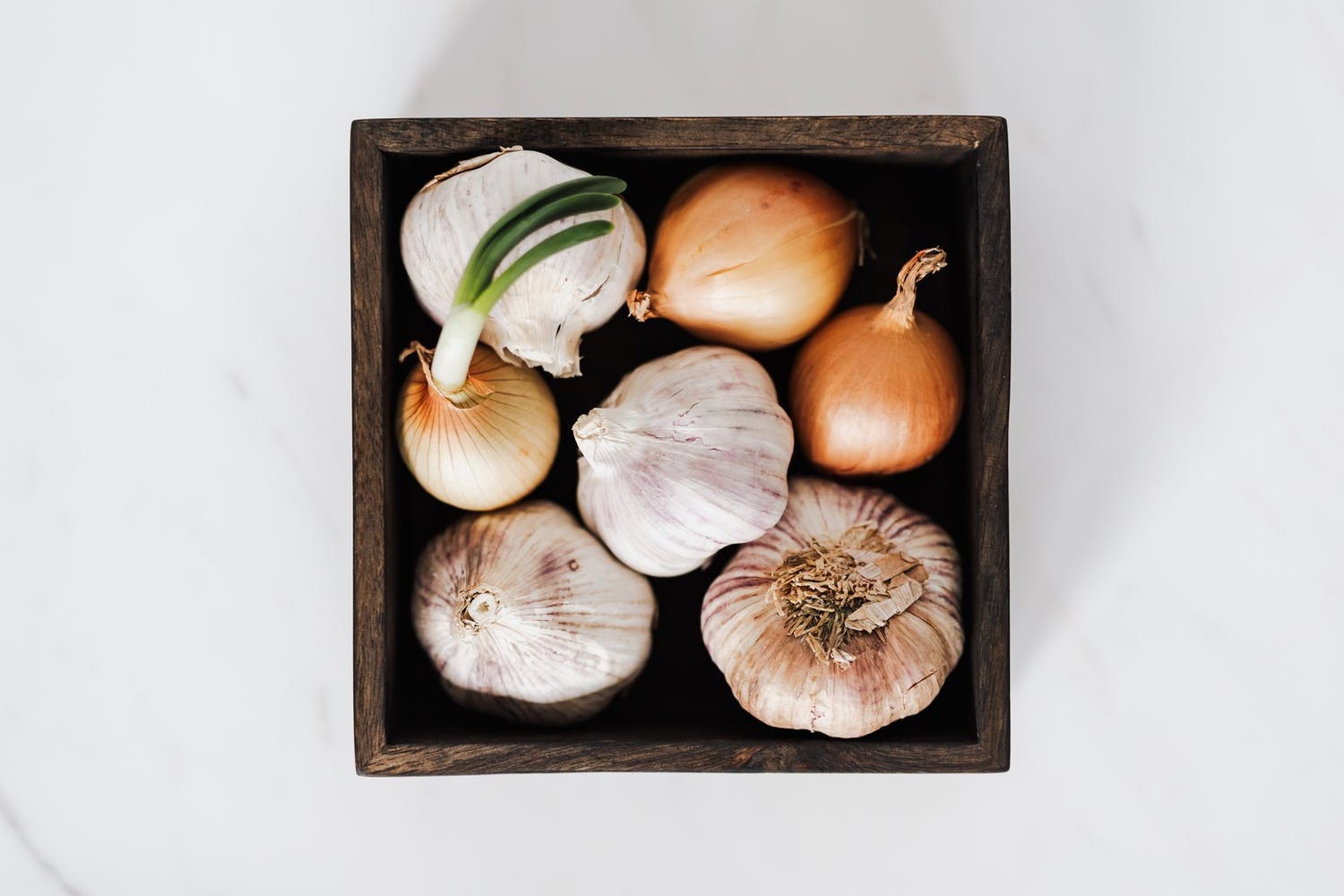
Onion Family: Basic Healing Properties
All members of the onion family share certain key qualities: they are pungent and influence the lungs and they promote warmth and thus move energy in the body, resolve blood stagnancies, reduce clotting, and expel coldness. They are perhaps the richest foods in sulfur, a warming element that purifies the body, helps remove heavy metals and parasites, and facilitates proteinlamino acid metabolism. Thus, those on a high-protein diet can benefit from the onion family. These plants also clean the arteries and retard the growth of viruses, yeasts, ferments, and other pathogenic organisms often proliferating in those eating unbalanced diets.
In spite of their medicinal virtue, these plants are thought to foster excessive emotional desire and therefore are not recommended in the major Oriental traditions for those seeking mental and spiritual refinement.
Other specific properties of each member of the onion family include:
Chives
Healing properties: Influences the kidneys, liver, and stomach. Dries damp condition, increases chi energy circulation and has been noted for treating blood coagulations, bruises, and swellings, especially when these occur from injuries. It is also good for treating the pain of arthritis.
The juice from either the whole crushed chive plant or its leaves can be applied to the injured or arthritic area. For best results, also eat fresh or lightly cooked chives or drink chive tea.
In addition, chives relieve weak, cold digestion marked by watery stools, strengthen the kidney yang and sexual capacity, and thus can be useful for treating urinary incontinence, and spermatozoa when such conditions result from coldness (typical signs may include clear and copious urine, white or clear abundant mucus disharge, pale complexion, chills, and aversion to the cold). Caution: Avoid when eye diseases, skin eruptions, and heat signs are present.
Dosage: 2-3 cups chive tea or consume about 60gm of chives daily.
Garlic
The most pungent onion family member, garlic has five of the six tastes (lacking sour) in different parts of the plant and has been mentioned by the ancient Egyptians, Babylonians, Romans, Greeks and Chinese as a wonderful remedy for a wide variety of disorders. In the Sanskrit texts it is known variously as "The Disgusting", "The Supreme Medicine", "Vata's Enemy", "Beloved of the Greeks" (or "Heretics") and "Lacking-One-Taste". It relieves both Vata and Kapha and increases Pitta. It is much better for the body than it is for the mind, making it intolerant and increasing Tamas. Following are a few of the numerous benefits attributed to this "aromatic" bulb.
Healing properties: Promotes circulation and sweating, removes abdominal obstructions and stagnant food, inhibits the common cold virus as well as other microorganisms associated with degenerative diseases such as cancer. Eliminates worms, unfavourable bacteria and yeasts, including Candida albicans. It is excellent for bronchitis, pneumonia, asthma and other flus and lung conditions and garlic oil (made by macerating garlic in olive oil) relieves earache when used as eardrops.
Caution: Garlic is contraindicated in heat conditions and when there are heat symptoms related to deficient yin fluids. Be alert to quantity and length of use - Chinese herbology claims too much garlic damages the stomach and the liver.
Garlic contains the substance allicin, which according to Japanese research findings, can destroy the membranes of red blood cells and inflame the gastrointestinal tract.
Dosage: Some individuals have success using large amounts of garlic - six cloves or more spread out over the day. Certainly such quantities are better tolerated when taken with wheatlbarley-grass products or other cooling foods, or eaten with meals. Its effectiveness is largely lost when cooked. A minimum effective dosage in most cases is approximately one third clove two or three times a day.
For the common cold, hold the garlic between the teeth and cheeks for 20 minutes before eating it.
Leeks
Healing properties: In addition to pungency, leek has a sour taste, which is associated with the liver. Leek can be used to treat dysphagia (difficulty in swallowing). The astringent property of the leek counteracts bleeding and diarrhea.
Onion
While it is pungent in taste, onion is not warming to the digestive tract due to its cold Virya, thereby inhibiting digestion to some degree. Those who have problems when raw onions are consumed will attest to this, so they are not recommended for Vata. Cooked onions lose most of their pungency while increasing the sweetness, making them better for Pitta and Vata in small quantities and less suitable for Kaphas than raw onions.
Healing properties: Heavy quality, strengthening. Promotes appetite, stimulates the heart, promotes bile production; reduce blood sugar; lowers blood pressure and cholesterol, decreases catarrh (phlegm and inflammation of the nose and throat)
Treats dysentery, inhibits allergic reactions, induces sweating. Onion packs on the chest are a remedy for bronchial inflammation and other chest congestions.
Juice compresses or raw onion packs are also used externally on insect bites to draw out swelling and pain.
